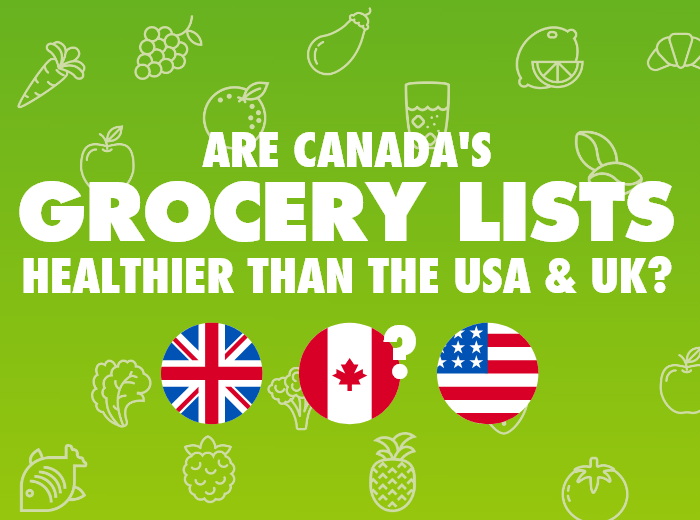From the most successful Veganuary on record at the beginning of 2019 to the ketogenic craze of 2018, there’s surely no signs of people wanting to lose weight and/or get healthy. As always, our users are just as keen to be their best possible selves as the rest of us. But what can our American, British, and Canadian users’ grocery lists tell us about the health of their respective countries?

Top Rated Shopping List App
Share And Synchronize An Unlimited Number
Of Lists With Others Instantly and Easy
Contents
- Canada Puts More Fruit and Vegetables on Their Shopping Lists than the USA and UK.
- Canada Goes Nuts for Bananas
- Canada Buys Less Unhealthy Products than the USA, but More than the UK</a
- Canada Has Lower Obesity Rates…
- …But Is the Least Active
- Healthier Shopping Lists Make for Healthier People
- Full Infographic
- Sources
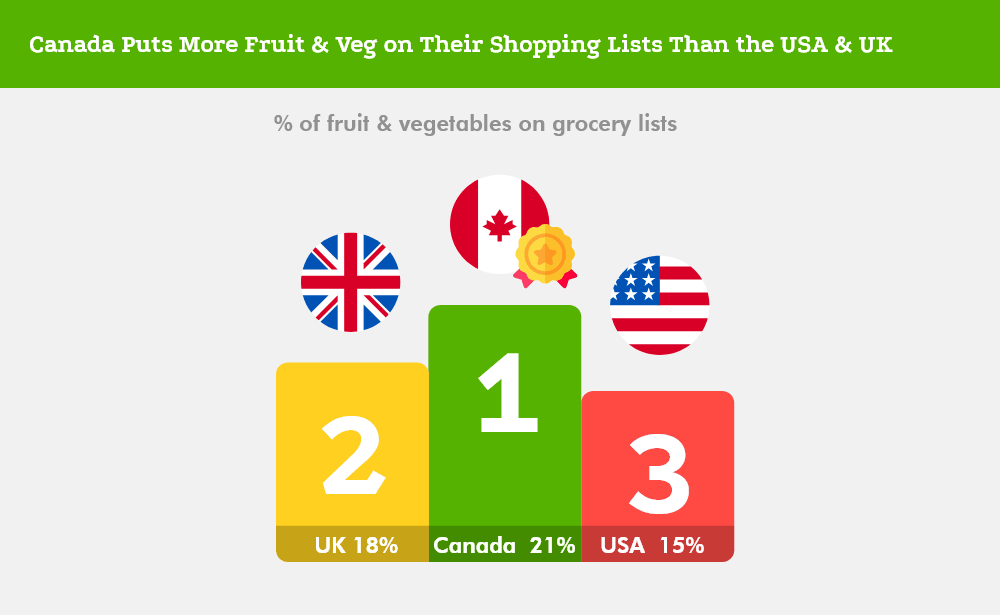 Canada Puts More Fruit and Vegetables on Their Shopping Lists than the USA and UK.
Canada Puts More Fruit and Vegetables on Their Shopping Lists than the USA and UK.
Our data shows that Canada has the healthiest of shopping lists out of our 3 contenders
Fruit and vegetables make up just over 20% of Canadians’ grocery lists.
The UK comes in next with produce making up just less than 18% of shopping lists, with the USA lagging behind with healthy fruit and veg only taking up less than 15% of space on their shopping lists.
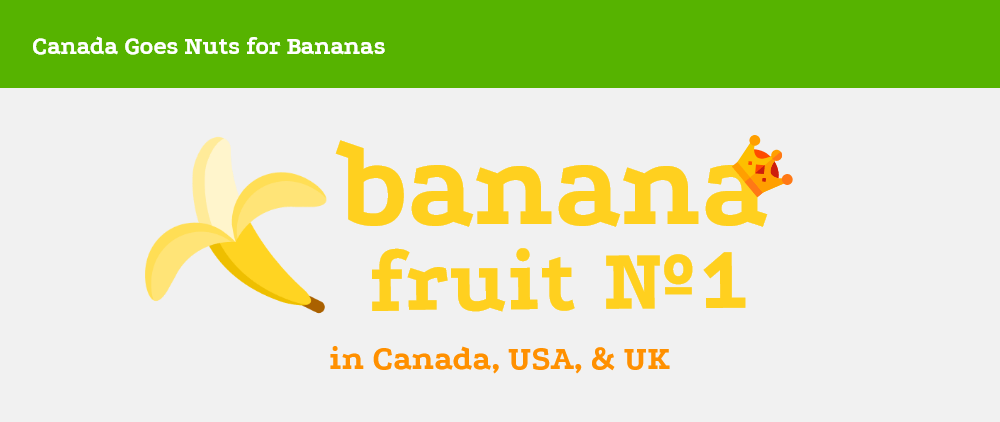 Canada Goes Nuts for Bananas
Canada Goes Nuts for Bananas
Bananas are Canada’s most popular fruit, ranking as the 4th most popular product on Canadian’s grocery lists.
In the USA bananas are also the most popular fruit, coming in as the 7th most popular product. Bananas are also the most popular fruit in the UK coming in 8th position.
However, all countries have the same the three top items on their shopping lists: eggs, bread, and milk.
Canada Buys Less Unhealthy Products than the USA, but More than the UK
Whilst Canada may be buying more fruit and veg than the UK and USA, it’s other shopping habits aren’t as wholesome. The UK buys less food from “unhealthy” categories overall. But Canada still doesn’t buy unhealthy food as much as it’s American neighbor.
| % of shopping list each category takes up | |||
|---|---|---|---|
| Canada | United Kingdom | United States of America | |
| Alcohol & Tobacco | 0.99% | 1.32% | 0.91% |
| Cakes & Desserts | 1.70% | 1.40% | 1.70% |
| Meat | 5.47% | 5.01% | 5.59% |
| Sweets & Snacks | 3.12% | 2.47% | 3.24% |
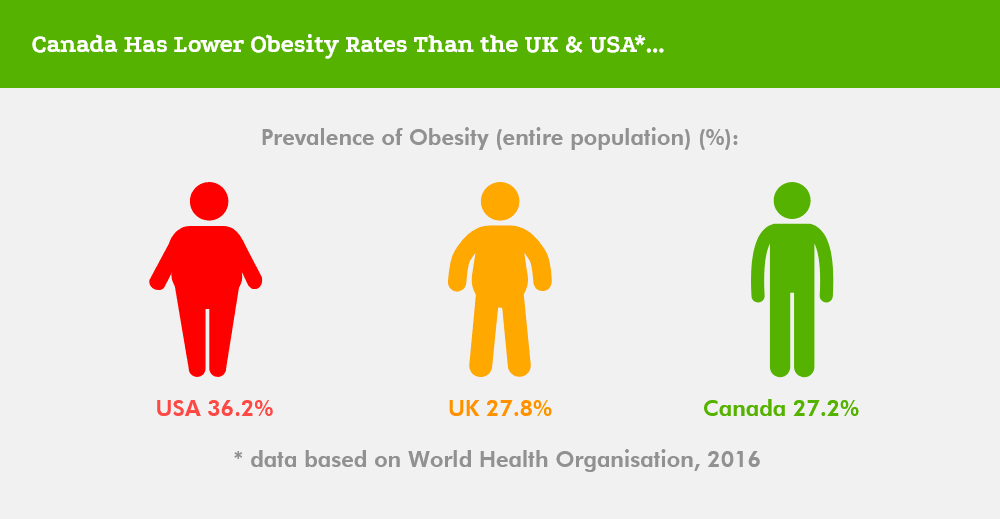 Canada Has Lower Obesity Rates….
Canada Has Lower Obesity Rates….
Of course, just because it’s on your grocery list, doesn’t mean you actually buy it. Even if you do buy it, whether you eat it or not is another matter.
But when you look at obesity rates across the trio of countries, the story matches that of their shopping lists. Canada has the lowest rate of obesity with a rate of only 27.2%1 of its population classed as obese. This is followed by the UK (27.8%)1 and the USA (36.2%)1.
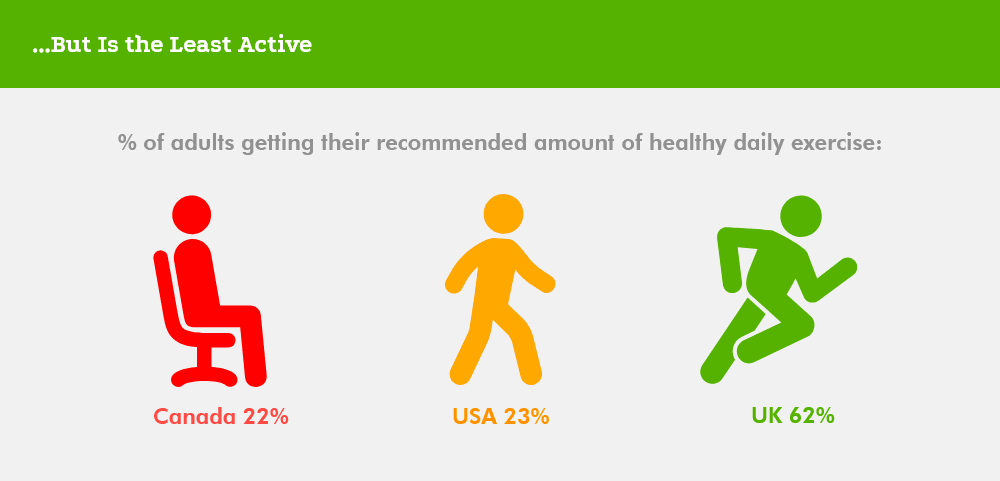 …But Is the Least Active
…But Is the Least Active
But, despite its low obesity rates, Canada is surprisingly sedentary. A rather lowly 22%2 of adult citizens are meeting the government’s guidelines for daily recommended physical activity. The USA only beats Canada by 1% with 23%3 of adults meeting recommended guidelines. The UK’s physical activity rates are nearly 3x higher, with a whopping 62%4 of adults getting their recommended amount of healthy daily exercise.
 Healthier Shopping Lists Make for Healthier People
Healthier Shopping Lists Make for Healthier People
Although our data is circumstantial, it does appear that there’s a case to be made that healthier shopping lists make for healthier people. Canada’s shopping habits are certainly better than the UK and the USA, buying more healthy food than both.
This is especially more compelling when comparing this to Canada’s low amount of people meeting healthy activity guidelines. This suggests that a healthy diet may be more important than exercise.
Therefore, it might be time for people to start making and sticking to a healthier shopping list to combat obesity and help lose weight.
Full Infographic

Sources
- World Health Organization, 2016
- Statistics Canada, 2013
- Centers for Disease Control and Prevention, 2018
- National Health Service, 2016
